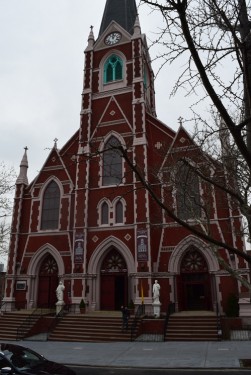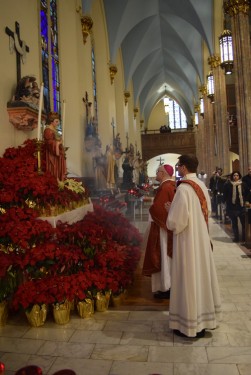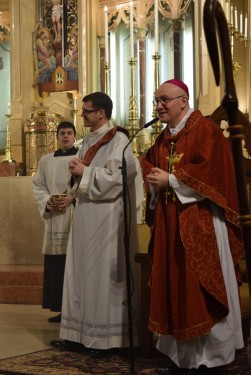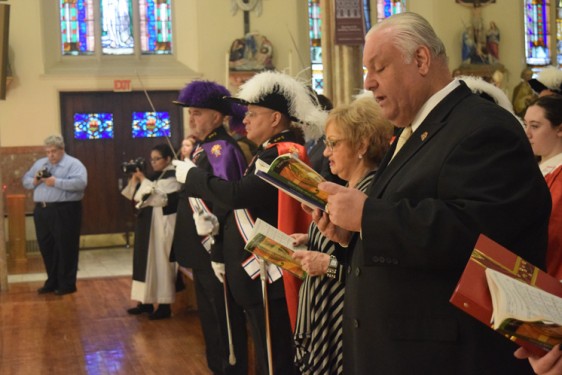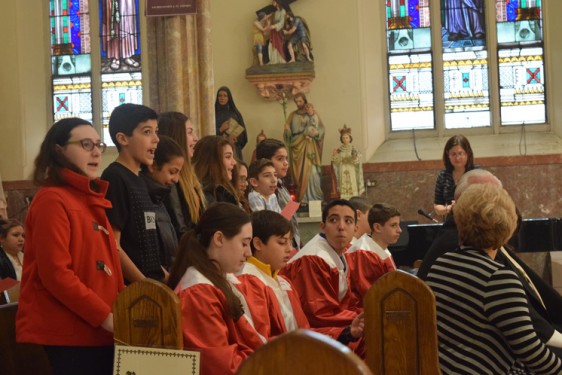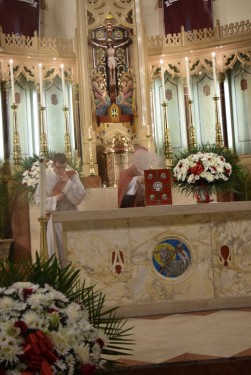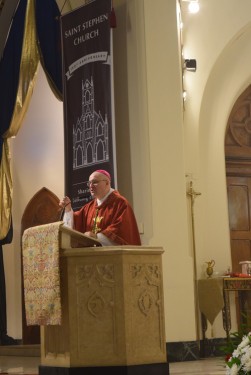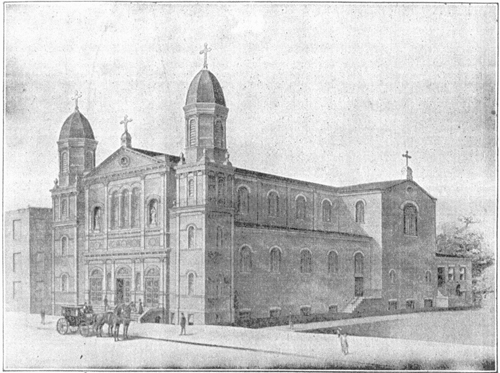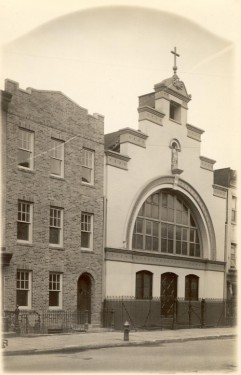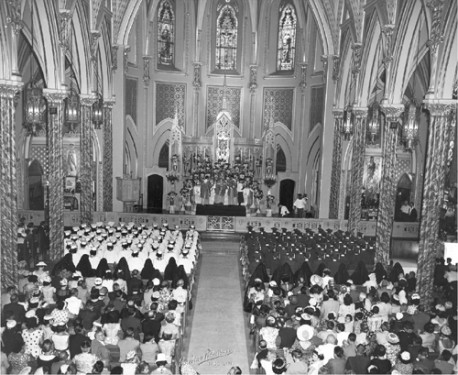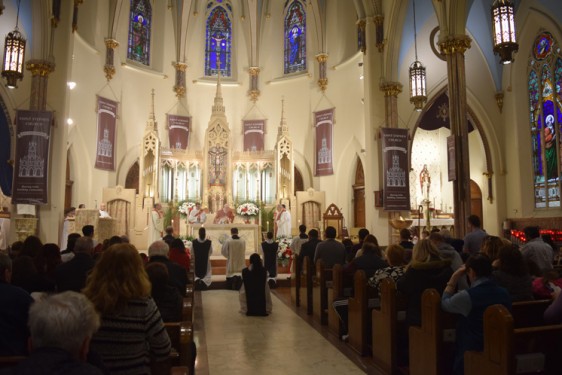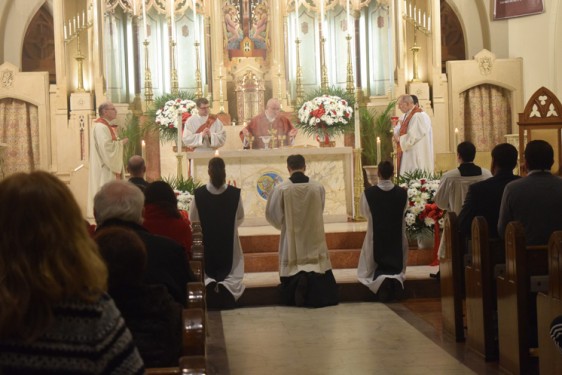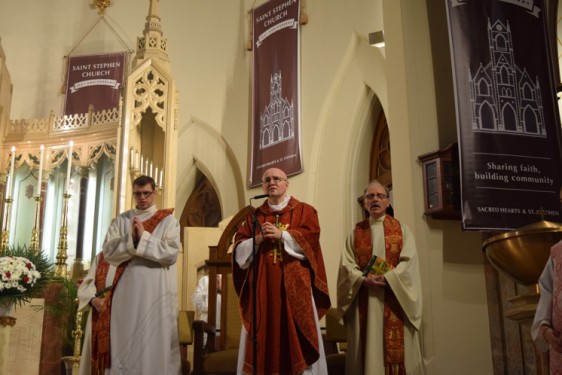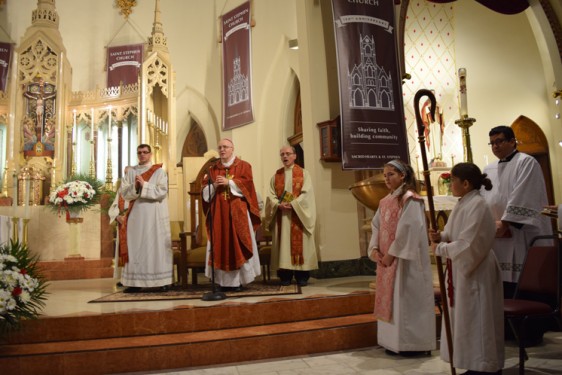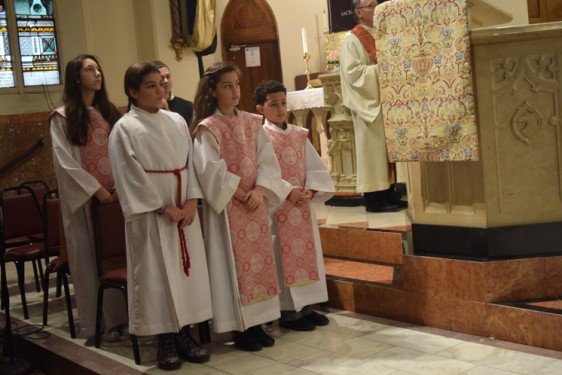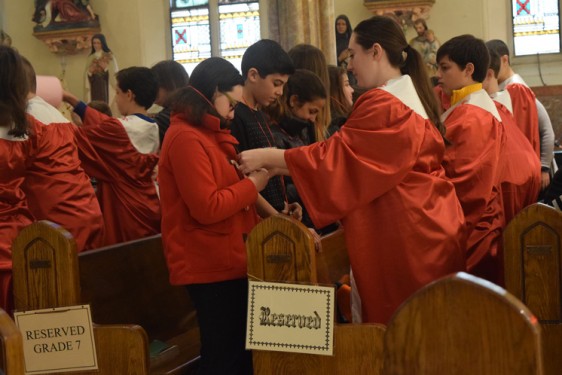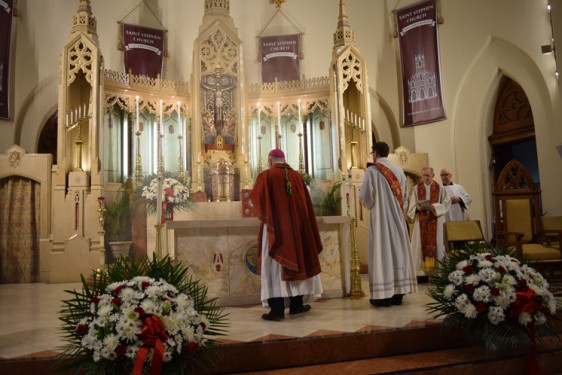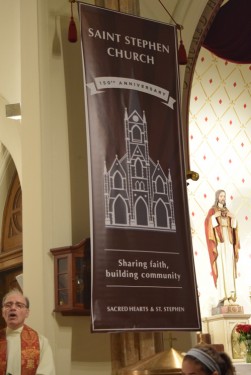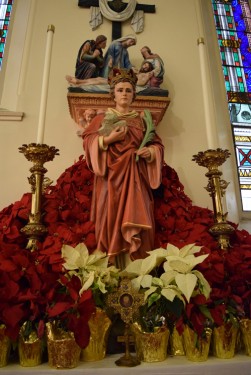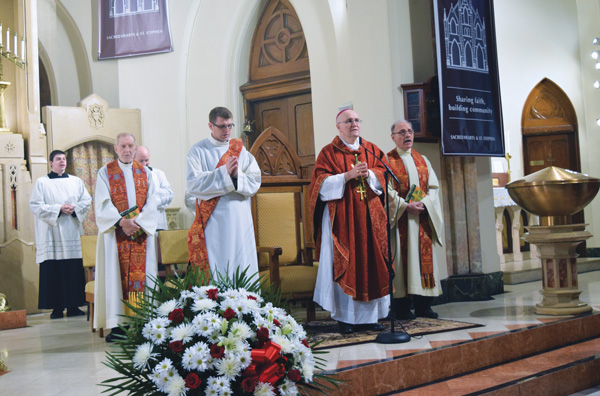
Auxiliary Bishop James Massa joined the community of Sacred Hearts-St. Stephen’s Church in Carroll Gardens to celebrate the parish’s patron saint, St. Stephen, and its 150th anniversary on Jan. 17.
Speaking in the church that has become a geographical icon of the neighborhood, thanks in part to its imposing steeple, Bishop Massa reminded the community of its humble beginnings. He based his remarks on a history compiled by pastoral associate, John Heyer.
St. Stephen’s Catholic Church was established in 1866 when Father Arthur J. Dorris purchased a small frame church on Carroll and Hicks streets from the Episcopalians. Bishop John Loughlin, the first Bishop of Brooklyn, dedicated the community to St. Stephen Promartyr that summer and it became the smallest parish, by square miles, in the diocese.
Thanks in part to an influx of Irish immigrants, the parish soon outgrew its small church building. Irish-born Brooklynite, Patrick Keeley, designed a new edifice, whose cornerstone was laid by Bishop Loughlin in 1873. Soon it became known as the New York Bay Church for its illuminated steeple cross served as a beacon to mariners entering the “bellissimo lago di San Germano” as the Catholic explorer John da Verrazzano once called the nearby bay.
During the early years of the parish history, St. Frances Cabrini, who later became the first American saint, ministered to parishioners.
The Irish neighborhood soon began to welcome an influx of Italian immigrants who would bring a rich tradition of street processions.
In the 1930s, parishioners received news that would change the course of not only parish history, but also the history of New York City. City planner Robert Moses designed an expressway connecting Brooklyn and Queens that would run through the middle of the parish and would force neighboring churches to close.
“The Italian community of Carroll Gardens was asked to sacrifice for the greater good of New York City,” Bishop Massa said during his homily at the anniversary Mass.
The nearby church of Sacred Hearts of Mary and Jesus was slated to close to make room for the BQE and the parish merged with St. Stephen’s.
On Dec. 7, 1941, the day Pearl Harbor was attacked, the pastor of the newly merged parish, Father Arsenio Caprio, “gathered the community for one last Mass in the old church… and then processed to the new home,” Bishop Massa said.
In 1951, the parish suffered a fire that completely destroyed the inside of the church. As the blaze took hold, one of the parish priests threw open the front doors of the church and ran into the burning building to retrieve the consecrated hosts. It is said that as he exited the church with the Blessed Sacrament, the roof caved in behind him, destroying the church.
As a testament to the strength of the parish, the people of the parish went door-to-door to collect the necessary funds to restore it. During the rebuilding, Mass was celebrated in the old school building. Local Jewish and Protestant congregations offered financial help.
“The parish footprint in Carroll Gardens just kept on extending,” Bishop Massa said.
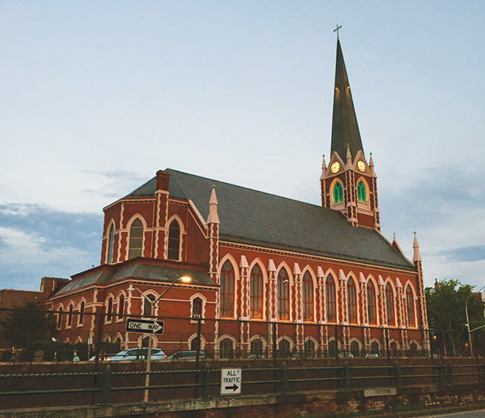
Throughout its history, the parish had two parochial schools, one for each of the original churches, and one high school.
When the last parochial school closed in 2006, Sister Rosalind Picciano, C.S.J, volunteered her service as director of religious education. She used the Mother Cabrini Hall in the basement of the church to teach classes. At first, she put up sheets to separate the classrooms. She started with 60 students and soon doubled the number.
“It was a little difficult,” she said. “But the parents trusted us.”
Sister Rosalind enjoyed refreshments after the anniversary Mass with a long time parishioner, 88-year-old Joseph Patti.
“A couple of years ago, I lost my wife of 61 years, Josephine,” Patti said “This is my other family.”
Patti said he could not remember a time the parish was not a central part of his life. The only time he did not attend Mass there was when he was serving in the Air Force.
He remembers the many processions that came from the traditions of Italy. He called them grand affairs, stretching across blocks with food and entertainment. He remembers one particular time, when he was 8 or 9 years old. He and a friend followed a procession via the fire escapes. He had so much fun he did not come home until about midnight.
His father was a longshoreman, a common profession at the time as the nearby docks served many supply ships.
His wife was also from the parish. They met through her brother, who was Joseph’s classmate in public school. They had three children. One of their daughters, now retired, works in the parish’s faith formation efforts.
“I enjoy being here, I enjoy my parish, I enjoy my religion,” John said. “The church is getting better with all the committees that are getting involved. The people are welcomed. You are getting a growth in the church. It’s getting better.”
New Migration and Bright Future
Msgr. Guy Massie, pastor, said that goal of the church is to bring more people to God. The parish, he said, traditionally served immigrants from across the Atlantic, but is now focusing its efforts on the newcomers to the neighborhood, young professionals mostly from the Midwest and the South. He said some of them already come to church but the parish hopes to continually engage them.
“We welcome those who are setting new roots in the area,” said parishioner John-Mark de Palma.
A lifelong parishioner himself, de Palma said there is a strong sense of community and belonging in the parish, thanks in part to the many activities the parish hosts, such as an annual block party and a New Year’s Eve party.
In order to help welcome the newcomers, the parish hands out flyers with a map, Mass times and other information during Advent and Lent in public spaces such as in front of the local subway station and park.
Msgr. Massie said the parish also invites local authors to discuss their books, not necessarily religious ones, and hosts celebrations as a way to engage the community. The parish also continues its tradition of processions, Lenten retreats and an outdoor Assumption Mass.
The pastor said his hope for the future of the parish is that “we could be in the neighborhood as a powerful force welcoming to all people: the believers, nonbelievers and the searchers. This is God’s house, open to all people of good will… We hope to help them to make room for God in their lives.”
The parish anniversary year is now in full swing and many festivities are planned, culminating in the rededication of the altar with the relics of Mother Cabrini. For more information on the year’s schedule, visit: sacredhearts-ststephen.com.

